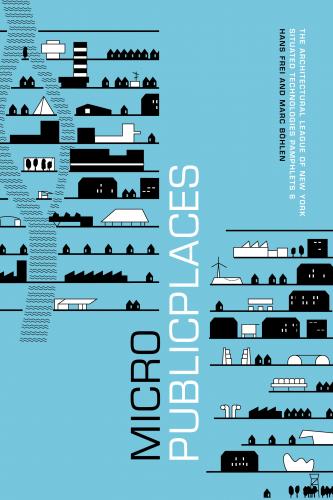Rich Gold: The Plenitude: Creativity, Innovation, and Making Stuff (2007)
Filed under book | Tags: · art, design, science, technology, ubiquitous computing

We live with a lot of stuff. The average kitchen, for example, is home to stuff galore, and every appliance, every utensil, every thing, is compound—composed of tens, hundreds, even thousands of other things. Although each piece of stuff satisfies some desire, it also creates the need for even more stuff: cereal demands a spoon; a television demands a remote. Rich Gold calls this dense, knotted ecology of human-made stuff the “Plenitude.” And in this book—at once cartoon treatise, autobiographical reflection, and practical essay in moral philosophy—he tells us how to understand and live with it.
Gold writes about the Plenitude from the seemingly contradictory (but in his view, complementary) perspectives of artist, scientist, designer, and engineer—all professions pursued by him, sometimes simultaneously, in the course of his career. “I have spent my life making more stuff for the Plenitude,” he writes, acknowledging that the Plenitude grows not only because it creates a desire for more of itself but also because it is extraordinary and pleasurable to create.
Gold illustrates these creative expressions with witty cartoons. He describes “seven patterns of innovation”—including “The Big Kahuna,” “Colonization” (which is illustrated by a drawing of “The real history of baseball,” beginning with “Play for free in the backyard” and ending with “Pay to play interactive baseball at home”), and “Stuff Desires to Be Better Stuff” (and its corollary, “Technology Desires to Be Product”). Finally, he meditates on the Plenitude itself and its moral contradictions. How can we in good conscience accept the pleasures of creating stuff that only creates the need for more stuff? He quotes a friend: “We should be careful to make the world we actually want to live in.”
Publisher MIT Press, 2007
Simplicity: Design, Technology, Business, Life series
ISBN 0262072890, 9780262072892
111 pages
PDF (updated on 2012-11-19)
Comment (0)Richard Coyne: The Tuning of Place: Sociable Spaces and Pervasive Digital Media (2010)
Filed under book | Tags: · culture jamming, facebook, gps, locative media, mobile technology, networks, pervasive media, rfid, ubiquitous computing, wireless networks

How do pervasive digital devices—smartphones, iPods, GPS navigation systems, and cameras, among others—influence the way we use spaces? In The Tuning of Place, Richard Coyne argues that these ubiquitous devices and the networks that support them become the means of making incremental adjustments within spaces—of tuning place. Pervasive media help us formulate a sense of place, writes Coyne, through their capacity to introduce small changes, in the same way that tuning a musical instrument invokes the subtle process of recalibration. Places are inhabited spaces, populated by people, their concerns, memories, stories, conversations, encounters, and artifacts. The tuning of place—whereby people use their devices in their interactions with one another—is also a tuning of social relations.
The range of ubiquity is vast—from the familiar phones and handheld devices through RFID tags, smart badges, dynamic signage, microprocessors in cars and kitchen appliances, wearable computing, and prosthetics, to devices still in development. Rather than catalog achievements and predictions, Coyne offers a theoretical framework for discussing pervasive media that can inform developers, designers, and users as they contemplate interventions into the environment. Processes of tuning can lead to consideration of themes highly relevant to pervasive computing: intervention, calibration, wedges, habits, rhythm, tags, taps, tactics, thresholds, aggregation, noise, and interference.
Publisher MIT Press, 2010
ISBN 0262013916, 9780262013918
344 pages
PDF (updated on 2013-2-6)
Comment (0)Marc Böhlen and Hans Frei (eds.): Situated Technologies Pamphlet 6: MicroPublicPlaces (2010)
Filed under pamphlet | Tags: · architecture, city, interactive design, labour, life, situated technologies, ubiquitous computing, urban computing, urbanism

In response to two strong global vectors: the rise of pervasive information technologies and the privatization of the public sphere, Marc Böhlen and Hans Frei propose hybrid architectural programs called Micro Public Places (MMPs). MPPs combine insights from ambient intelligence, human computing, architecture, social engineering and urbanism to initiate ways to re- animate public life in contemporary societies. They offer access to things that are or should be available to all: air, water, medicine, books, etc. and combine machine learning procedures with subjective human intuition to make the public realm a contested space again.
Series Editors: Omar Khan, Trebor Scholz, Mark Shepard
Publisher: The Architectural League of New York
PDF
Get a printed copy from Lulu.com.

